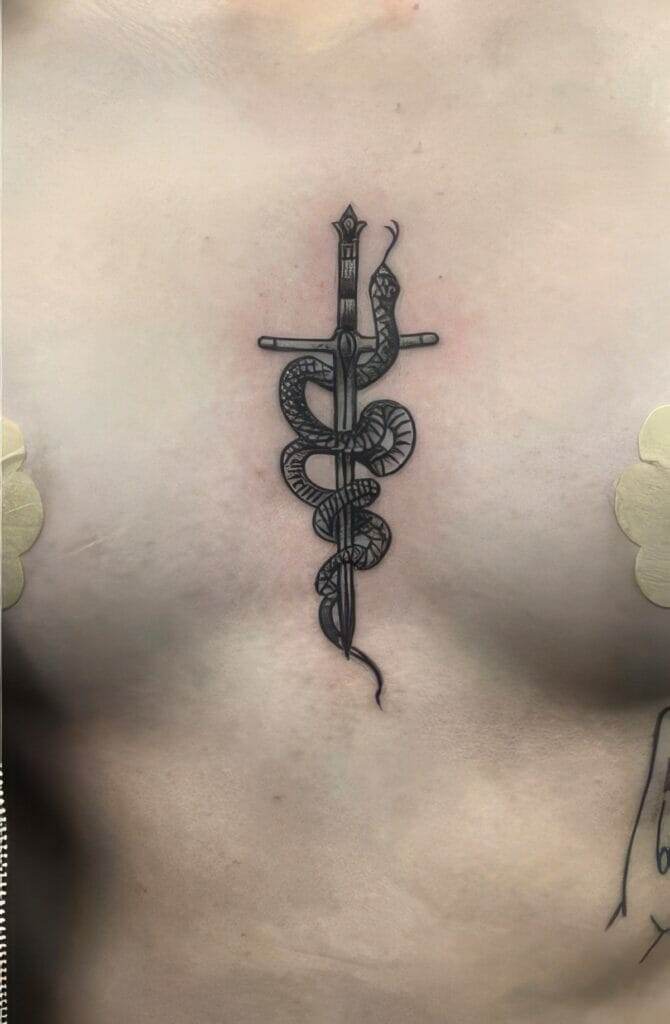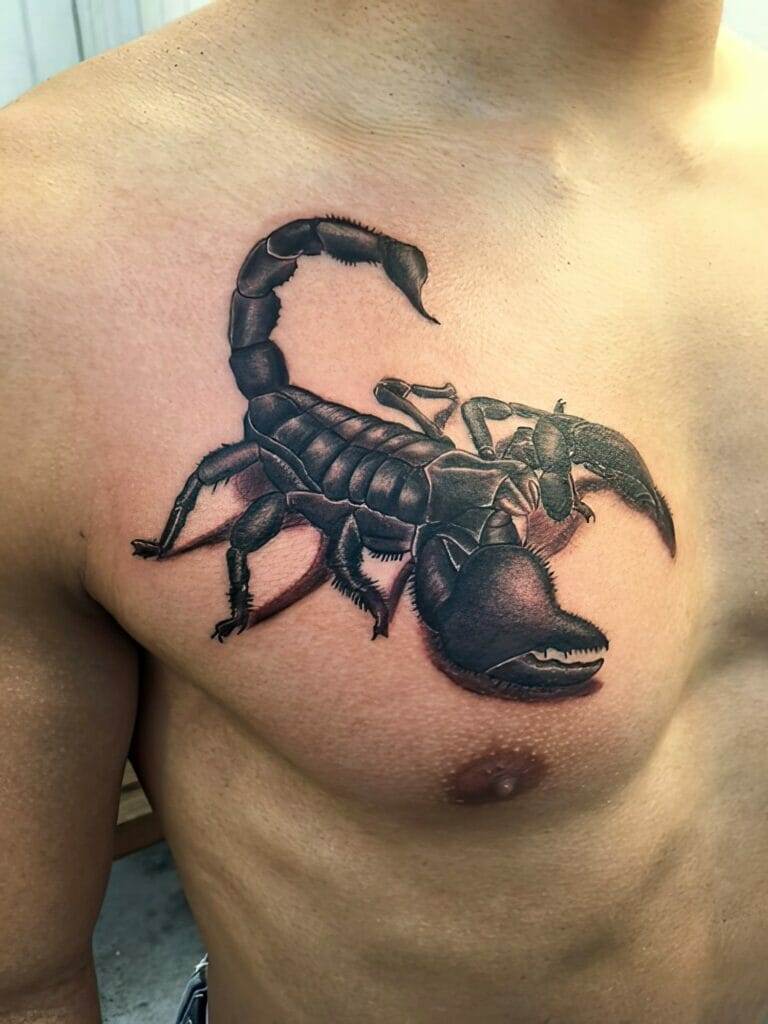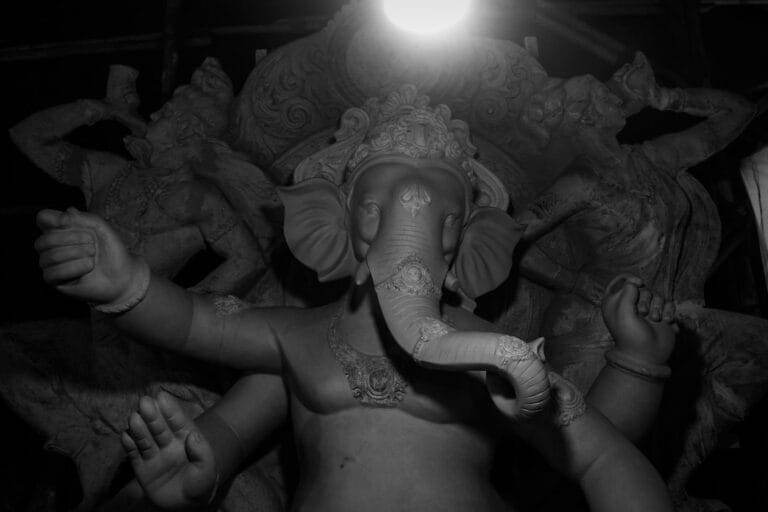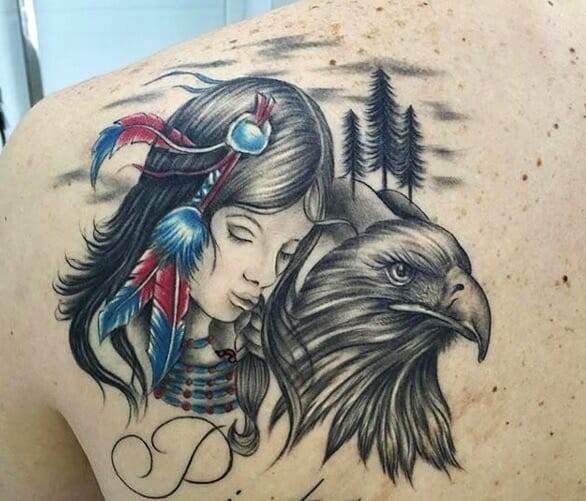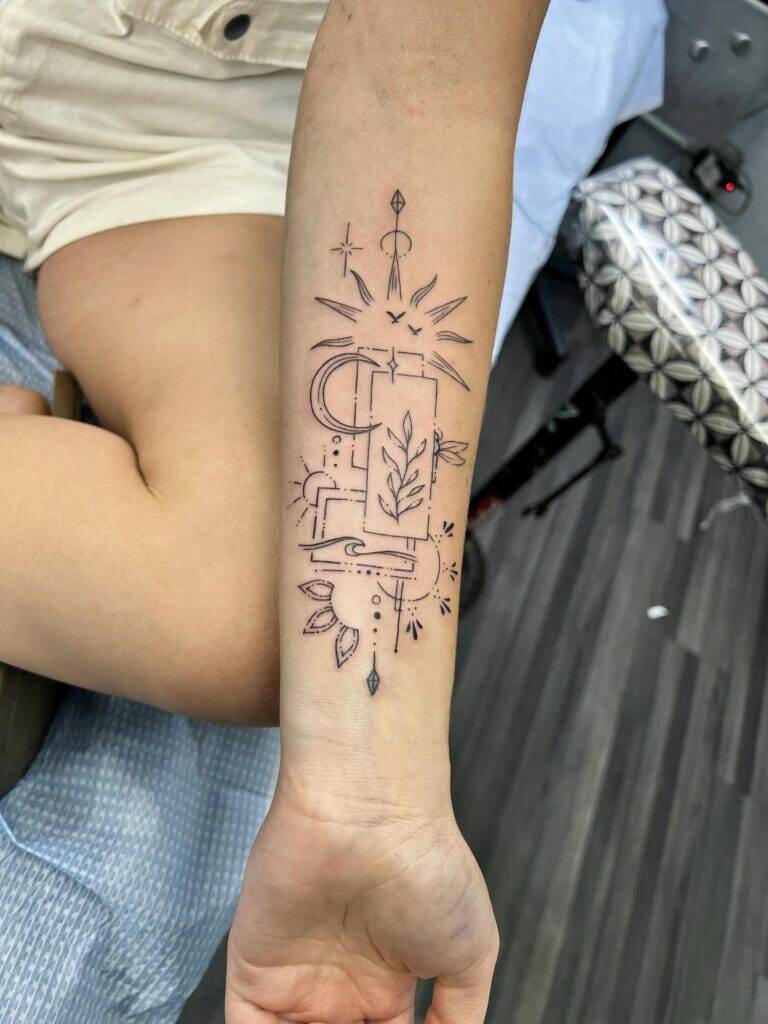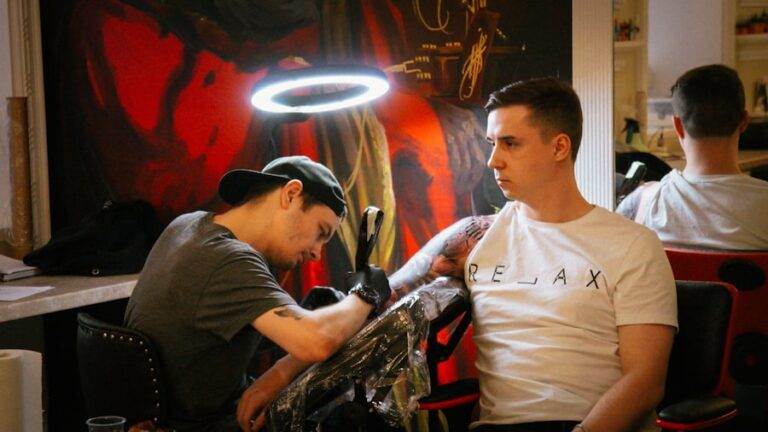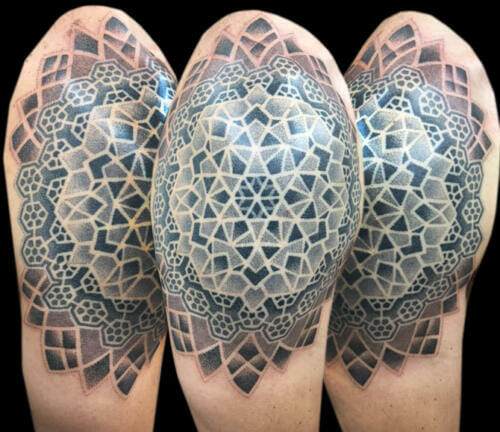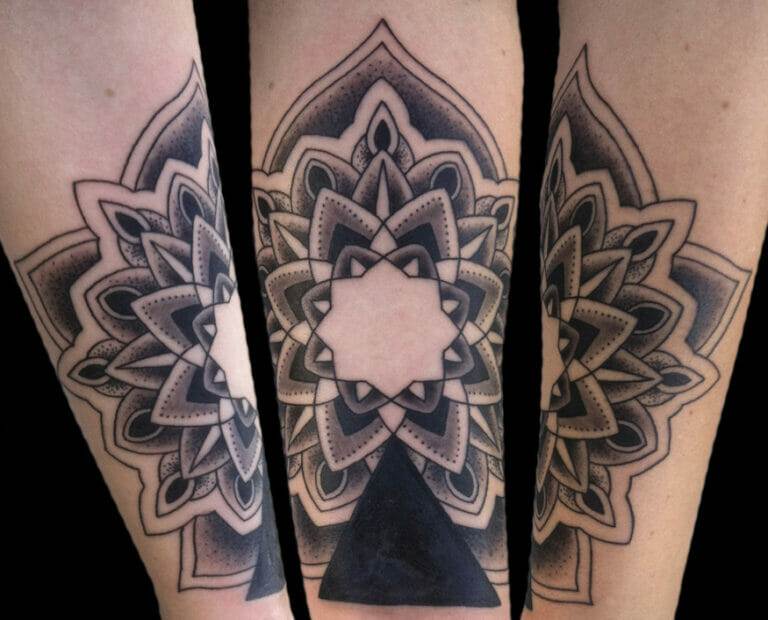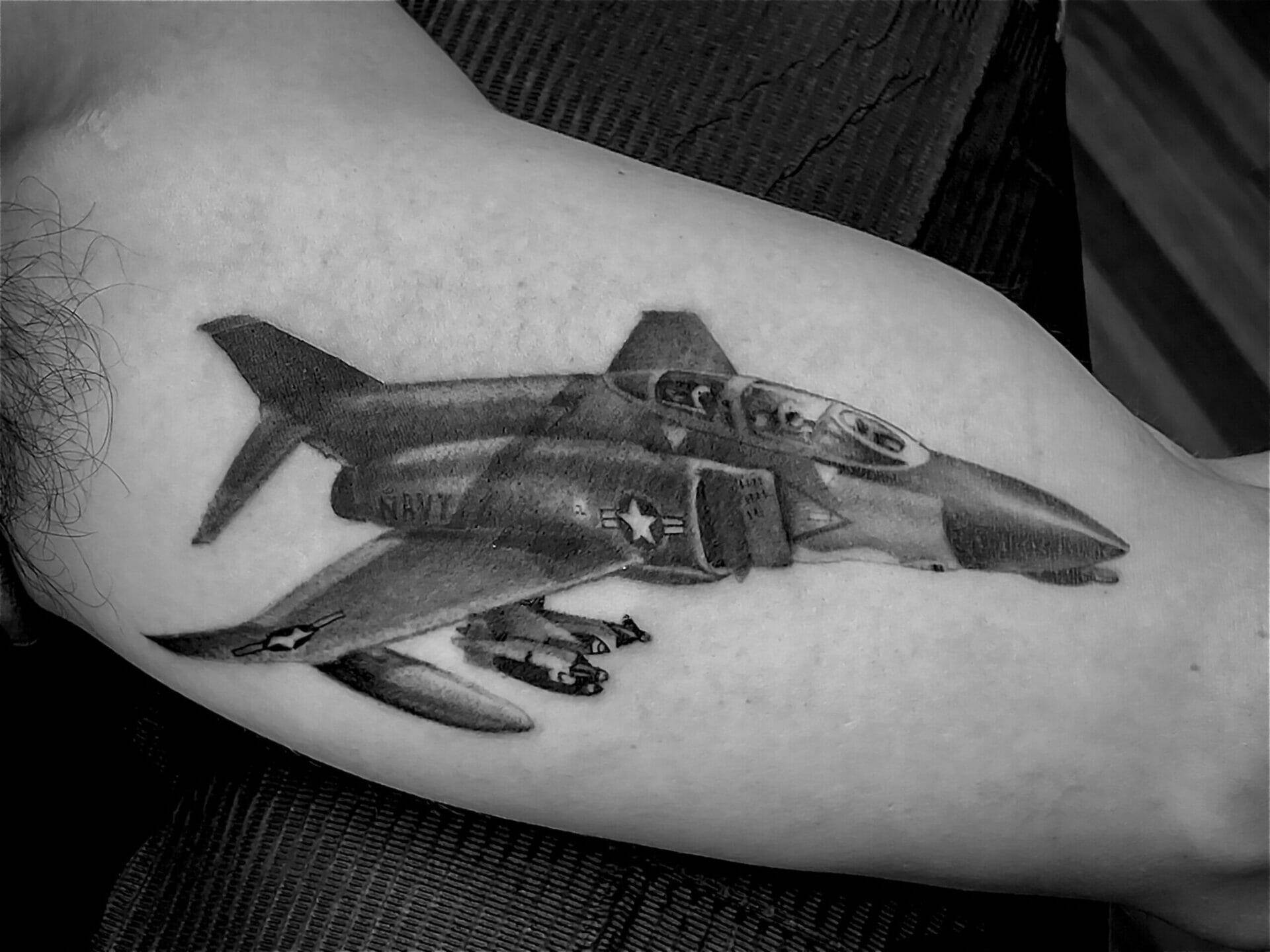
Stippling tattoos are a unique form of body art that involves the use of small dots or stipple marks to create intricate designs and shading. Unlike traditional tattoos that use solid lines and blocks of color, stippling tattoos rely solely on the placement and density of these dots to create depth, texture, and visual interest. This technique requires a great deal of skill and precision, making it a truly unique art form within the world of tattooing.
The history of stippling tattoos can be traced back to ancient civilizations, where dotwork was used as a form of body adornment and cultural expression. However, it wasn’t until the 20th century that stippling tattoos began to gain recognition as a distinct style within the tattooing community. Today, stippling tattoos have become increasingly popular, with many artists specializing in this intricate technique.
The History of Stippling Tattoos and Its Evolution
The origins of stippling tattoos can be traced back to ancient cultures such as the Maori people of New Zealand and the indigenous tribes of North America. These cultures used dotwork as a way to tell stories, convey spiritual beliefs, and mark important milestones in a person’s life. The use of dots allowed for intricate patterns and designs that were both visually striking and deeply meaningful.
Over time, stippling tattoos evolved and began to incorporate elements from other tattooing styles. In the 20th century, artists such as George Burchett and Sailor Jerry helped popularize stippling tattoos by incorporating them into their own unique designs. These artists experimented with different techniques and styles, pushing the boundaries of what was possible with dotwork.
Today, stippling tattoos have evolved even further, with artists using advanced tools and techniques to create incredibly detailed and realistic designs. Artists like Xoil and Chaim Machlev have gained international recognition for their innovative approach to stippling tattoos, pushing the boundaries of what can be achieved with this unique art form.
Understanding the Technique of Stippling Tattoos
Stippling tattoos are created by using a tattoo machine or hand tool to repeatedly puncture the skin with small dots. The density and placement of these dots create the illusion of shading, depth, and texture. The artist must have a steady hand and a keen eye for detail to ensure that the dots are evenly spaced and consistent in size.
To create stippling tattoos, artists use specialized tools such as single-needle tattoo machines or hand-poking tools. These tools allow for precise control over the placement and density of the dots, resulting in highly detailed and intricate designs. The artist may also use different techniques such as layering or cross-hatching to create different effects and textures.
There are several different styles and variations of stippling tattoos, each with its own unique characteristics. Some artists specialize in black and grey stippling tattoos, while others incorporate color into their designs. Some artists focus on creating realistic portraits or landscapes, while others prefer more abstract or geometric designs. The possibilities are truly endless when it comes to stippling tattoos.
Stippling Tattoos: A Versatile Style for Different Body Parts
One of the great things about stippling tattoos is that they can be applied to virtually any part of the body. The unique dotwork technique allows for intricate designs that can be adapted to fit different areas and contours of the body.
For example, stippling tattoos can be applied to the arms and legs, creating stunning sleeves or leg pieces. The dotwork technique can be used to create intricate patterns and designs that wrap around the limbs, creating a visually striking and cohesive look.
Stippling tattoos can also be applied to the chest and back, creating large-scale designs that make a bold statement. The dotwork technique can be used to create shading and depth, resulting in highly detailed and realistic designs.
Additionally, stippling tattoos can be applied to smaller areas such as the hands, feet, or neck. These smaller designs can be highly symbolic or meaningful, serving as a constant reminder of something important or significant in a person’s life.
The Meaning Behind Stippling Tattoos: Symbolism and Interpretation
Like any form of body art, stippling tattoos can hold deep personal meaning and symbolism. The dots themselves can represent a variety of things, depending on the design and the individual’s interpretation.
Common symbols in stippling tattoos include mandalas, sacred geometry, animals, flowers, and spiritual or cultural symbols. These symbols can represent personal beliefs, values, or experiences, serving as a visual representation of something meaningful to the individual.
Interpreting the meaning behind a stippling tattoo is highly personal and subjective. It is important to take the time to reflect on the design and its significance to you. Consider what the symbols or elements mean to you personally, and how they align with your own values and beliefs.
It is also important to communicate your intentions and interpretations with your tattoo artist. They can help guide you in creating a design that accurately represents your vision and holds personal meaning for you.
Stippling Tattoos: A Perfect Choice for Cover-Ups and Corrections
Stippling tattoos can be an excellent choice for covering up unwanted tattoos or correcting mistakes or imperfections in previous tattoos. The dotwork technique allows for precise placement and shading, making it possible to effectively cover up or modify existing tattoos.
When it comes to cover-up tattoos, stippling can be particularly effective because it allows for seamless blending of colors and textures. The dots can be strategically placed to create a new design that effectively conceals the old tattoo while still maintaining a visually appealing result.
Similarly, stippling tattoos can be used to correct mistakes or imperfections in previous tattoos. The dotwork technique allows for precise placement of dots, making it possible to fill in gaps, correct uneven lines, or add shading where needed.
It is important to consult with an experienced tattoo artist when considering a cover-up or correction using stippling tattoos. They will be able to assess the existing tattoo and provide guidance on the best approach to achieve the desired result.
The Pros and Cons of Stippling Tattoos: What You Need to Know
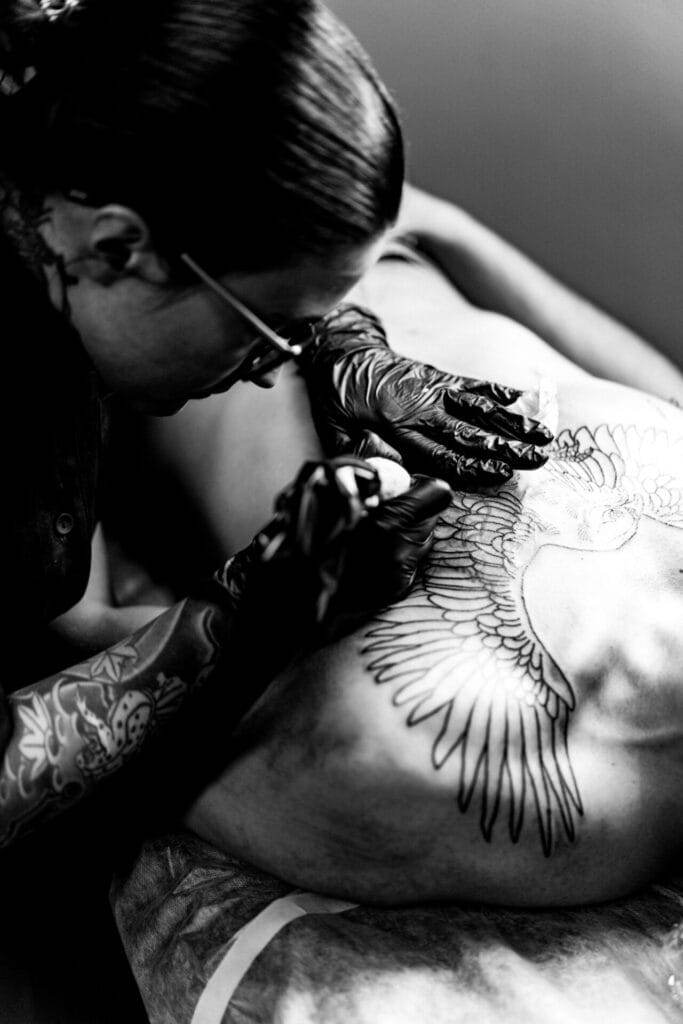
Like any form of body art, stippling tattoos have their own set of advantages and potential drawbacks. It is important to consider these factors when deciding whether a stippling tattoo is right for you.
One of the main advantages of stippling tattoos is their unique aesthetic appeal. The dotwork technique creates a visually striking and highly detailed result that is unlike any other style of tattooing. Stippling tattoos can also be highly personalized, allowing for meaningful and symbolic designs that hold deep personal significance.
Another advantage of stippling tattoos is their versatility. The dotwork technique can be adapted to fit different body parts and contours, making it possible to create designs that flow seamlessly with the natural shape of the body.
However, there are also potential drawbacks and risks associated with stippling tattoos. One potential drawback is the time and cost involved in getting a stippling tattoo. The dotwork technique requires a great deal of time and precision, so it may take longer and cost more than other styles of tattooing.
Another potential drawback is the level of pain associated with stippling tattoos. The repeated puncturing of the skin with small dots can be more painful than traditional tattooing techniques. It is important to be prepared for this and discuss pain management options with your tattoo artist.
It is also important to consider the potential risks associated with stippling tattoos, such as infection or allergic reactions. It is crucial to choose a reputable tattoo artist who follows strict hygiene practices and uses high-quality materials to minimize these risks.
Stippling Tattoos: Aftercare and Maintenance Tips
Proper aftercare is crucial for ensuring the longevity and quality of your stippling tattoo. Here are some tips to help you care for your new tattoo:
1. Follow your artist’s aftercare instructions: Your tattoo artist will provide you with specific aftercare instructions tailored to your stippling tattoo. It is important to follow these instructions carefully to ensure proper healing.
2. Keep the tattoo clean: Gently wash your tattoo with mild soap and warm water, using your hands or a clean cloth. Avoid scrubbing or rubbing the tattoo, as this can cause irritation or damage.
3. Apply a thin layer of ointment: After washing, apply a thin layer of tattoo ointment or moisturizer recommended by your artist. This will help keep the tattoo hydrated and prevent dryness or cracking.
4. Avoid direct sunlight and excessive moisture: Protect your tattoo from direct sunlight and avoid soaking it in water for prolonged periods. Excessive exposure to sunlight and moisture can fade the tattoo and increase the risk of infection.
5. Avoid picking or scratching: It is important to resist the urge to pick or scratch at your tattoo, as this can cause scarring or damage to the design. If itching occurs, gently pat the area with a clean cloth instead.
6. Avoid tight clothing or friction: Wear loose-fitting clothing that won’t rub against your tattoo, especially during the healing process. Friction can cause irritation and affect the healing of your tattoo.
7. Stay hydrated and eat a balanced diet: Proper hydration and nutrition are important for overall skin health and healing. Drink plenty of water and eat a balanced diet to support the healing process.
8. Schedule touch-up appointments if needed: Depending on the design and your skin type, you may need touch-up appointments to ensure the longevity and vibrancy of your stippling tattoo. Consult with your artist to determine if touch-ups are necessary.
The Future of Stippling Tattoos: Trends and Innovations
Stippling tattoos continue to evolve and adapt to new trends and innovations within the tattooing industry. Here are some current trends and innovations in stippling tattoos:
1. Colorful stippling tattoos: While traditional stippling tattoos are done in black and grey, some artists are now incorporating color into their designs. This adds a new dimension to stippling tattoos, allowing for even more creativity and visual impact.
2. Mixed media stippling tattoos: Some artists are combining stippling with other tattooing techniques, such as watercolor or realism, to create unique and visually stunning designs. This blending of styles adds depth and complexity to stippling tattoos.
3. Technological advancements: Advancements in tattooing technology, such as improved tattoo machines and pigments, are making it easier for artists to create highly detailed stippling tattoos. These advancements allow for greater precision and control, resulting in even more intricate designs.
4. Collaborations with other artists: Stippling tattoo artists are increasingly collaborating with other artists, such as painters or illustrators, to create unique and innovative designs. These collaborations bring together different artistic styles and techniques, resulting in truly one-of-a-kind stippling tattoos.
As the popularity of stippling tattoos continues to grow, it is likely that we will see even more trends and innovations in the future. Artists will continue to push the boundaries of what is possible with stippling tattoos, creating new and exciting designs that captivate and inspire.

Embrace the Beauty of Stippling Tattoos
Stippling tattoos are a unique and visually striking form of body art that allows for intricate designs and shading using small dots. The history of stippling tattoos can be traced back to ancient cultures, but it has evolved over time to become a distinct style within the tattooing community.
Understanding the technique of stippling tattoos is important when considering this style of body art. It requires a skilled artist who can create precise and detailed designs using specialized tools and techniques.
Choosing the right tattoo artist for stippling tattoos is crucial to ensure a successful and meaningful design. It is important to find an artist who specializes in this technique and who is willing to collaborate with you on your vision.
Stippling tattoos can be applied to various body parts and can be adapted to fit different areas. The meaning behind stippling tattoos can be highly personal and symbolic, allowing for deep personal expression.
Stippling tattoos can also be used for cover-ups or corrections, providing a solution for unwanted or imperfect tattoos. However, it is important to consider the potential risks and drawbacks associated with stippling tattoos.
Proper aftercare and maintenance are crucial for the longevity and quality of stippling tattoos. Following your artist’s instructions and taking care of your tattoo will ensure that it heals properly and maintains its vibrancy.
The future of stippling tattoos is bright, with new trends and innovations emerging within the tattooing industry. Artists will continue to push the boundaries of what is possible with stippling tattoos, creating even more intricate and visually stunning designs.
In conclusion, stippling tattoos are a unique and beautiful form of body art that allows for intricate designs and shading using small dots. Whether you are drawn to the aesthetic appeal, the personal symbolism, or the versatility of stippling tattoos, embracing this art form can be a truly transformative experience. So, take the time to explore this unique style and find a design that speaks to you.

